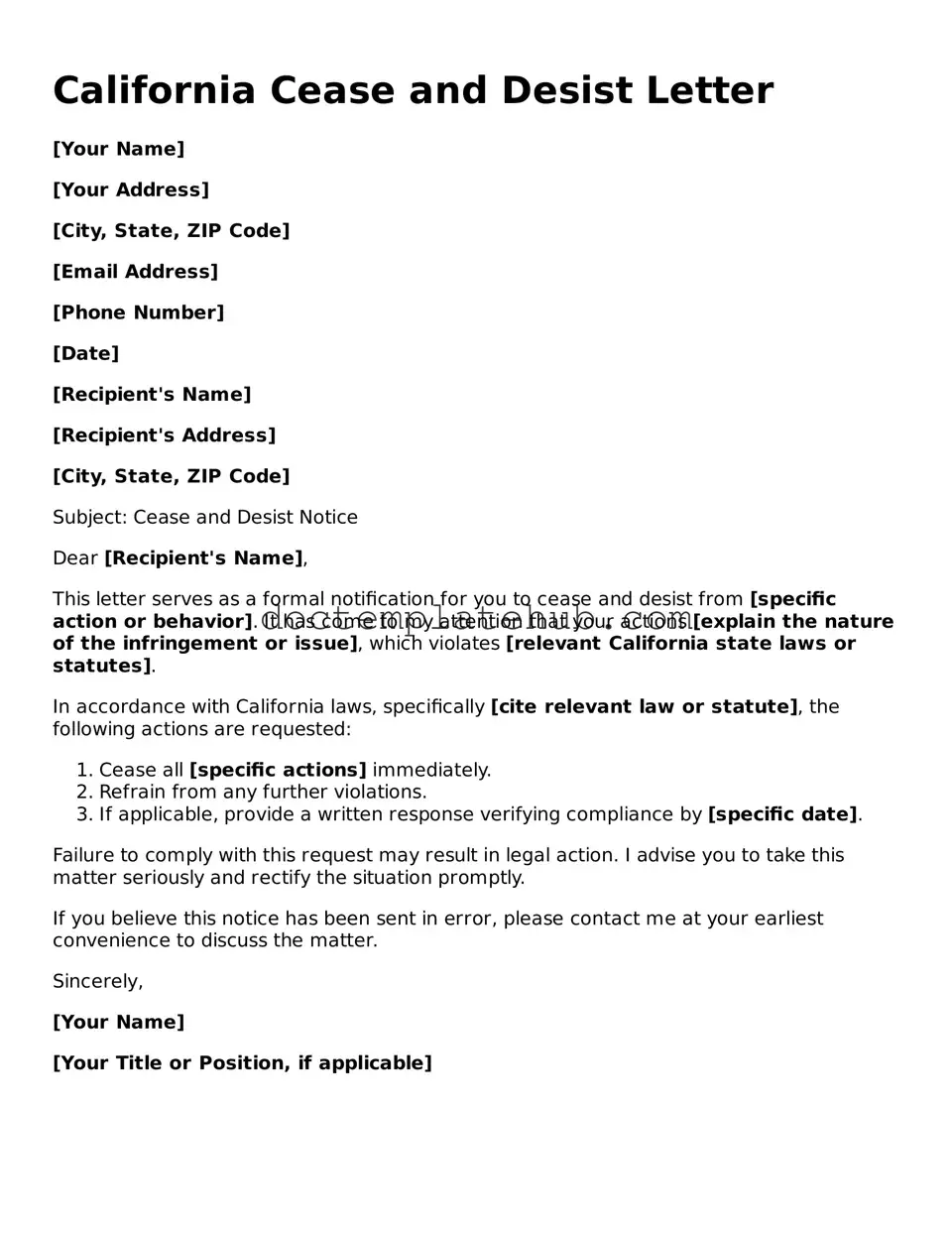What is a California Cease and Desist Letter?
A California Cease and Desist Letter is a formal document that requests an individual or organization to stop engaging in specific actions that are believed to be harmful or unlawful. It serves as a warning and provides the recipient with an opportunity to rectify the situation before further legal action is pursued.
Who can issue a Cease and Desist Letter in California?
Any individual or business that believes their rights are being violated can issue a Cease and Desist Letter. This includes, but is not limited to, cases of copyright infringement, trademark violations, harassment, or defamation.
What should be included in a Cease and Desist Letter?
A well-crafted Cease and Desist Letter should include the sender's contact information, a clear statement of the actions that are causing concern, a description of how those actions violate the sender's rights, and a request for the recipient to cease those actions. Additionally, it may specify a timeline for compliance and outline potential consequences if the behavior continues.
Is a Cease and Desist Letter legally binding?
While a Cease and Desist Letter is not a legally binding document, it serves as a formal request. It can be an important step in resolving disputes amicably. If the recipient fails to comply, the sender may choose to pursue further legal action, which could include filing a lawsuit.
How should the recipient respond to a Cease and Desist Letter?
The recipient should carefully review the claims made in the letter. If they believe the claims are valid, they may choose to comply and cease the specified actions. Alternatively, they can respond with a counter-argument, seeking clarification or disputing the claims. It is advisable to consult with a legal professional before responding.
Can a Cease and Desist Letter be sent via email?
Yes, a Cease and Desist Letter can be sent via email. However, for legal purposes, it is often recommended to send it via certified mail or another method that provides proof of delivery. This ensures that the recipient cannot deny receiving the letter.
What happens if the recipient ignores the Cease and Desist Letter?
If the recipient ignores the letter, the sender may decide to take further action. This could involve filing a lawsuit or seeking a court order to enforce their rights. Ignoring the letter may also negatively impact the recipient’s position in any potential legal proceedings.
How long does it take to prepare a Cease and Desist Letter?
The time required to prepare a Cease and Desist Letter can vary. It depends on the complexity of the situation and the specific details that need to be addressed. Generally, it can take anywhere from a few hours to a couple of days to draft a comprehensive letter.
Are there any costs associated with sending a Cease and Desist Letter?
Yes, there may be costs associated with sending a Cease and Desist Letter. These could include fees for legal consultation, document preparation, and postage if sent via certified mail. It is important to consider these costs when deciding to send a letter.
Can a Cease and Desist Letter be used in court?
While a Cease and Desist Letter itself is not a legal document that can be used as evidence in court, it can be relevant in demonstrating that the sender made a good faith effort to resolve the issue before resorting to litigation. This may be taken into account by the court if the matter escalates.
